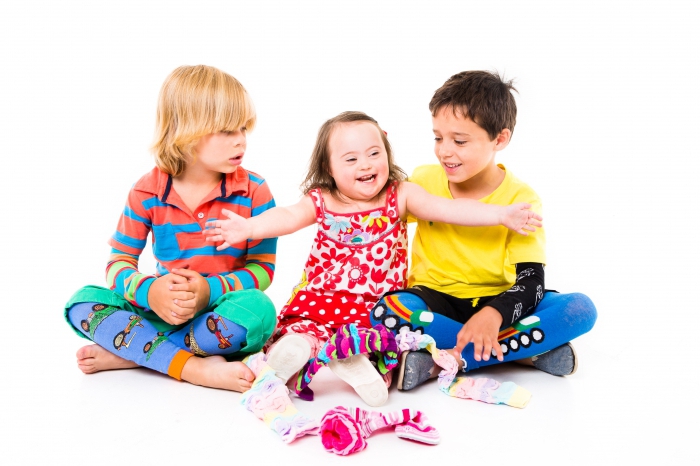Standard tax deduction It is an operation to deduct a certain amount (its size is determined by the norms of the law), not subject to taxation, from the total income of the taxpayer. Income must be considered funds that were received from the actions of a citizen for a given taxable period. Different tax rates may apply. If we talk about strategic offensive arms (standard tax deduction), then when it is presented, only income taxed at a rate of 13% is taken into account.

It is worth noting when considering the standard tax deductions for children in 2015: the Tax Code provides for various options for their use, which we will discuss below. In this article we have collected information about this: how much the deduction is for the child, deduction codes, limits, double deduction, how to take advantage of the benefits for children who are entitled to them.
Other types of strategic offensive arms
When considering standard tax deductions for children in 2015, do not forget about other deductions. So, tax legislation provides for certain circumstances and categories of citizens under which and for which other tax deductions can be applied. They have the right to:
- liquidators of the consequences of the accident at the Chernobyl nuclear power plant;
- invalids of the Second World War;
- injured at the Mayak production association from a radioactive accident.
The amount of deduction varies depending on these indicators. It is clear that the use of strategic offensive arms by the above categories of citizens is a rare occurrence, since in most cases these individuals receive non-taxable pensions. Now we’ll find out what standard tax deductions for children are envisaged in 2015, what changes are available in this area, and what important details taxpayers should pay attention to.
Child deduction right
The deduction applies to:
- adoptive parents;
- parents
- guardians and other persons who are equated with the above category.

These statuses require official recognition, in other words, documented information is required, which is contained in acts of guardianship authorities, birth certificates, court decisions recognizing paternity. In addition, the legislator determines the category of age of the child, in accordance with which a corresponding deduction is provided:
- up to 24 years old if the child is studying full-time in an educational institution or is an intern, graduate student, intern;
- under 18 years old.
In addition, standard tax deductions for a child in 2015 are provided separately for children with disabilities.
Parents have a question about whether it is possible to receive this deduction if the son / daughter is studying at the magistracy. Can. At the moment, higher education is divided into two levels. At the same time, a master's degree (level 2) is not considered as obtaining a second higher education, therefore, if students are under 24 years old and study at the master's program, then their parents can receive standard tax deductions for children in 2015, the maximum amount of which is 3000 rubles , only on condition that education is obtained for the first time in the second stage.
Deduction amount
Such a deduction can be taken into account until the month when the income from the beginning of the year with an increasing total exceeded the taxpayer’s 280,000 rubles. Moreover, the size of strategic offensive arms is always differentiated:
- for the 1st and 2nd child - 1400 rubles;
- on the 3rd and subsequent - already at 3000 rubles;
- standard tax deductions for a disabled child are 3,000 rubles. For example, if such a baby is the first-born, the size of the deduction will still be 3000 rubles.
The principle of using the deduction is additive, in other words, each deduction is added to the previous one, but not absorbed. So, if there are 4 children, then the total amount of the deduction will be 8800 rubles on them.
It should be borne in mind that in the indicated amounts each parent can receive a deduction.

How is the order of the kids determined?
The ranking of children is made chronologically, it depends on their age. So, the first baby is the oldest, and further in descending order.
For example, a family has four children. 1st - 25 years old, 2nd - 17 years old, 3rd - 15 years old, 4th - 10 years old. In this case, the standard tax deductions for children in 2015 will be distributed as follows:
- 1st child - 0 rub.;
- 2nd - 1400 rubles;
- 3rd - 3000 rubles .;
- subsequent - 3000 rubles.
Or another example. There are 3 children in the family: the first child does not study at 22 years old, the second child died at 15 years old, the third child is 8 years old. In this case, parents have the right to a standard tax deduction for an 8-year-old child in the amount of 3,000 rubles.
Who provides this deduction?
The deduction is provided to the recipient by his employer, and if there are several of them at once, the priority is determined by the choice of the employee. The employer makes the necessary calculations, after which he makes the payment of tax and reports to the tax. You just have to look at the receipts and statements for the salary, carefully monitoring whether the deduction has been taken into account. If an error has been identified, you must inform the accounting department of the company.

If the deduction is made by the employer
A standard tax deduction for a child is made every month during the 1st tax period if the employee filed a corresponding application when applying for a job, as well as after the birth of the baby. In the event that the recipient of this deduction has been working with this employer since the middle of the year, the deduction is used taking into account that made earlier at the previous place of work.
Refund through tax surplus personal income tax
If the standard tax deductions for children were not made (documents were not provided to the accounting department of the enterprise), or the accounting department of the company made mistakes and the deductions were not fully taken into account, then their recipient can independently apply to the tax authority after the taxation period. But in practice, such cases are very rare, basically it is easier to do with the employer, submitting a timely application. To file for a tax refund for a baby:
- certificate of employment 2-personal income tax;
- 3-personal income tax return;
- a certificate from a school or other educational institution.
Standard tax deductions for children are obtained by the method of withholding salary amounts. The employer, if there is a reason, is required to deduct the deduction from the size of the salary, and apply the tax rate to the remaining amount.

What documents must be submitted to the accounting department of the company to obtain this deduction:
- Documents for children (an act of the guardianship authority, an act from the court on recognition of paternity, a birth certificate).
- The employee submits, upon request, the employer a free deduction application.
- If the child’s age is 18-24 years old, he is studying full-time at the university, a certificate of the fact of training will be required.
- If one of the parents transfers the right to receive this deduction to the second, then the corresponding application, as well as a certificate from the work that there are no other deductions.
- If the baby is a disabled person, then a document confirming disability, and a medical report.
These documents can be provided to the employer only 1 time; you do not need to write a statement every year. Only when changing jobs you need to submit an application and documents to the new employer, attaching a 2-personal income tax certificate from the previous job.
Document submission time
At birth, each employee can write a statement, in addition, provide a birth certificate. The deduction will be made from now on.
Also, when applying for a new job, you must immediately write a statement, bring a birth certificate, in addition, a 2-NDFL certificate received at the same place of work.
If an employee was hired and immediately for some reason did not provide documents, but brought them before December of this year, the accounting department is required to recalculate the overpaid personal income tax for this year.

Standard tax deductions for children if parents are divorced or are in a civil marriage
How does the law work in cases where there is no marriage registration between the parents of the baby? Standard tax deductions for a child, if the parents are divorced, can be received by both parents, however, a prerequisite is the confirmation of the fact that the minor citizen is on their support. In this case, the following official documents must be provided:
- certificate of registration (registration of the child) at the place of residence of the parent;
- a copy of the court decision where it will be written with whom the child lives;
- parental agreement to pay child support.
We get double standard tax deductions
If the adoptive parents (parents) wish, the standard tax deductions for children can be replaced by a double deduction, which one of them will receive. To do this, it is enough to bring a statement about the refusal of any of the parents to receive such a deduction, and the refused parent every month provides a 2-personal income tax certificate.
For such a transfer of the right of deduction, a prerequisite is that the transferor has a steady income that is subject to personal income tax, in other words, the unemployed cannot transfer his deduction to spouse.
Therefore, in order for one of the parents to receive standard tax deductions for a child in 2015 in double size, additional documents are needed:
- every month - certificate 2 of personal income tax, in addition, a statement of parental refusal;
- an application for a second tax deduction for the baby from the second parent.
In addition, single mothers are entitled to double deduction. They must provide a certificate of form 25, which is received at the registry office and confirms the status of a single mother.
The standard tax double deduction is applied, like a simple one, to the aggregate certain annual income, more precisely, to the month when the salary reaches 280,000 from the beginning of the year.

Standard tax deductions for a single parent child
The Ministry of Finance notes that the parent is not the only one if the marriage between the parents of the baby is simply not registered. In other words, non-payment of alimony, divorce, deprivation of parental rights of the second spouse is not a basis for claiming that the child has a single parent. To confirm the absence of the second parent, you must provide one of the following documents:
- birth certificate, in which only one parent will be indicated;
- a court decision legislating that the second parent was missing;
- a certificate from the registry office confirming the fact that the second parent was recorded in the birth certificate from the words of the mother;
- death certificate of one of the parents.
START Limitations
According to the norms of legislation, standard tax deductions for a child in 2015 are made taking into account income that is taxed at an interest rate of 13%, although nevertheless this income does not fall in the totality of this deduction. The legislator determined that a deduction can be made from income declared by a tax agent.

At the same time, the employer may declare as a tax agent exclusively earned wages of his own employee. Consequently, if a citizen temporarily did not work anywhere (for example, during 2014), he will not be able to receive a standard tax deduction. Moreover, for that period of time, he might have some other sources of income (for example, rent for real estate that this citizen rents out).A citizen can even report on them to the tax authority by paying in good faith a tax, but he still will not receive a deduction.
If the deduction was not provided by the employer, it can be obtained after the tax period at the tax office by filling in the appropriate application. In the future, it will be enough for you to submit an application to your current employer, after which you will receive a deduction for all future periods, without wasting your own time and effort.
START Compatibility
This type of tax deduction is compatible with other types of standard deduction, among which one can distinguish such as property, social and professional. In other words, all these deductions complement each other and add up. But it must be borne in mind that if the accrual of such deductions turns out to be even a little more than income, then these excess amounts are equal to zero, since the deductions are exclusively compensatory in nature, and their effect depends directly on the tax activity of each taxpayer.

